Jigsaw Your Math Classroom

“How does the jigsaw method work in my mathematics class?” asked Jessica. I was standing at the left side of the room. I had asked session participants for questions. The participants had been reading about various evidence-based strategies. That question made my mind go blank. “What did I know about using jigsaw method in a mathematics classroom?” While I could extrapolate its application, I didn’t have specific examples for math like I did for science or history.

How Should I Have Responded?
When you get a tough question you’re not prepared for, it’s an opportunity to invite further discussion and learn more. While I had a response that appeared to satisfy the questioner, I felt like I had responded with less than 100% certainty. For me, the response should have had these three components:
- A quick overview of the jigsaw method, perhaps with a hands-on activity
- A specific example of how a teacher could implement the jigsaw method in their classroom, no matter the grade level.
- Stories from those who had put the jigsaw method into action in a math classroom
In this situation, I didn’t have the second two. So, I wrote this blog entry to deepen my learning. Let’s explore these three specific response components.
Component #1 – An Overview of The Jigsaw Method
On the website, Jigsaw Your Mathematics Classroom , the author shares several goals:
- Learn the jigsaw method and how to implement it in a mathematics classroom.
- Design a jigsaw lesson that can be used in your mathematics classroom.
- Develop an assessment that appropriately evaluates student understanding after the completion of a jigsaw lesson.
“The jigsaw technique is a simple, well-structured cooperative learning structure that emphasizes both individual accountability and achievement of group goals, both of which are critical for improved student learning in cooperative settings.” (Source: On the Cutting Edge course design workshops)
You could walk people through a jigsaw activity, or have them watch “The Gummy Bear” video.
The Gummy Bear Jigsaw
Take a moment to watch this gummy bear video featuring The Jigsaw Classroom:
Then, reflect on these questions:
- What is the significance of the color of the gummy bears?
- What are the gummy bears expected to do?
- What is the difference between the groups before and after they switch around? Why is this important? What did they do after they switched groups?
- What does the teacher do while the gummy bears are working? What suggestions could you make about the teacher’s role during this activity?
What a fun way to introduce students and/or educators to the jigsaw method. Let’s study it a bit more.
How the Jigsaw Method Works
There are multiple types of jigsaw methods. The main problems with incomplete jigsaws techniques appear below:
- Less effective readers share misinformation with the group. Everyone gets the misinformation, interfering with understanding.
- A failure to see how their assigned part fits within the whole
- Critical thinking that results from analysis and synthesis doesn’t happen ( Source: ASCD’s Let’s Get Jigsaw Right ).
The successful jigsaw method takes these steps:
- Home group splits up into expert groups to explore a specific aspect of a topic.
- Regroup into home groups to discuss findings from each expert group.
- Split into expert groups to consider the whole in light of home group insights.
In step one, students focus on exploring the information offered. In step two, students engage in summarizing, questioning, and clarifying content with others. In step three, students bring their insights from the home group back to their expert groups. A critical part of the third step is meta-cognition, synthesis, and analysis. This results from conversations with others in the group.
You can see how this works in this 2011 video featuring Elliot Aronson, credited with the jigsaw method. You can find a bank of activities that rely on the jigsaw method online. Let’s take a look at the structure of one activity,
Why the Jigsaw Method Works
Wondering why the jigsaw method works? Here’s a bit of background on this powerful instructional strategy:
The jigsaw technique is a method of organizing classroom activity that makes students dependent on each other to succeed. It breaks classes into groups and chunks assignments into pieces that the group assembles to complete the (jigsaw) puzzle. The Jigsaw Method enjoys an effect size of 1.20. This makes it one of the most effective instructional strategies you can use.
This effective strategy can accelerate student growth up to three years in one academic year. In fact, the jigsaw method involves students reading new information. They discuss it with others who have read the same information. This allows them to extend their learning. Then, students move to new groups where they teach their peers about what they read. They also learn new information from group members (Source: John Hattie, Keynote address, TCEA 2022 Convention and Exposition).
Other Benefits of the Jigsaw Method
Wondering if there are other benefits to the jigsaw method? There are. Here are a few:
- Direct engagement by the students with the material . Instead of having material presented to them, they are able to interact with the material directly, which fosters depth of understanding.
- Practice in self-teaching . This is one of the most valuable skills we can help them learn.
- Practice in peer teaching . This skill requires students to understand the material at a deeper level than simply asking to produce on an exam.
- Improvement in social-emotional learning . This includes increased feelings of autonomy, competence, and intrinsic motivation (Hänze & Berger, 2007).
- Speaking the language of the discipline. The jigsaw method helps students become more fluent in the use of discipline-based terminology
- Team-building. Students contribute to the group and take ownership of the work.
- Encouraging cooperation , active learning , and promoting the valuing of all students’ contributions ( source )
Now that you know a little about the jigsaw method , let’s dig into specific examples for mathematics.
Component #2 – Specific Examples for Math
Many of the examples you will find online for the jigsaw method focus on science, history, and/or nonfiction texts. But what about mathematics? Is the jigsaw method only for literacy? Let’s take a look.
Below, you will find two examples. You may find that certain grade levels and types of activities may lend themselves to the use of the jigsaw method. The key is in how you set up the expert group organizers.
Example One: Transformations and Symmetry
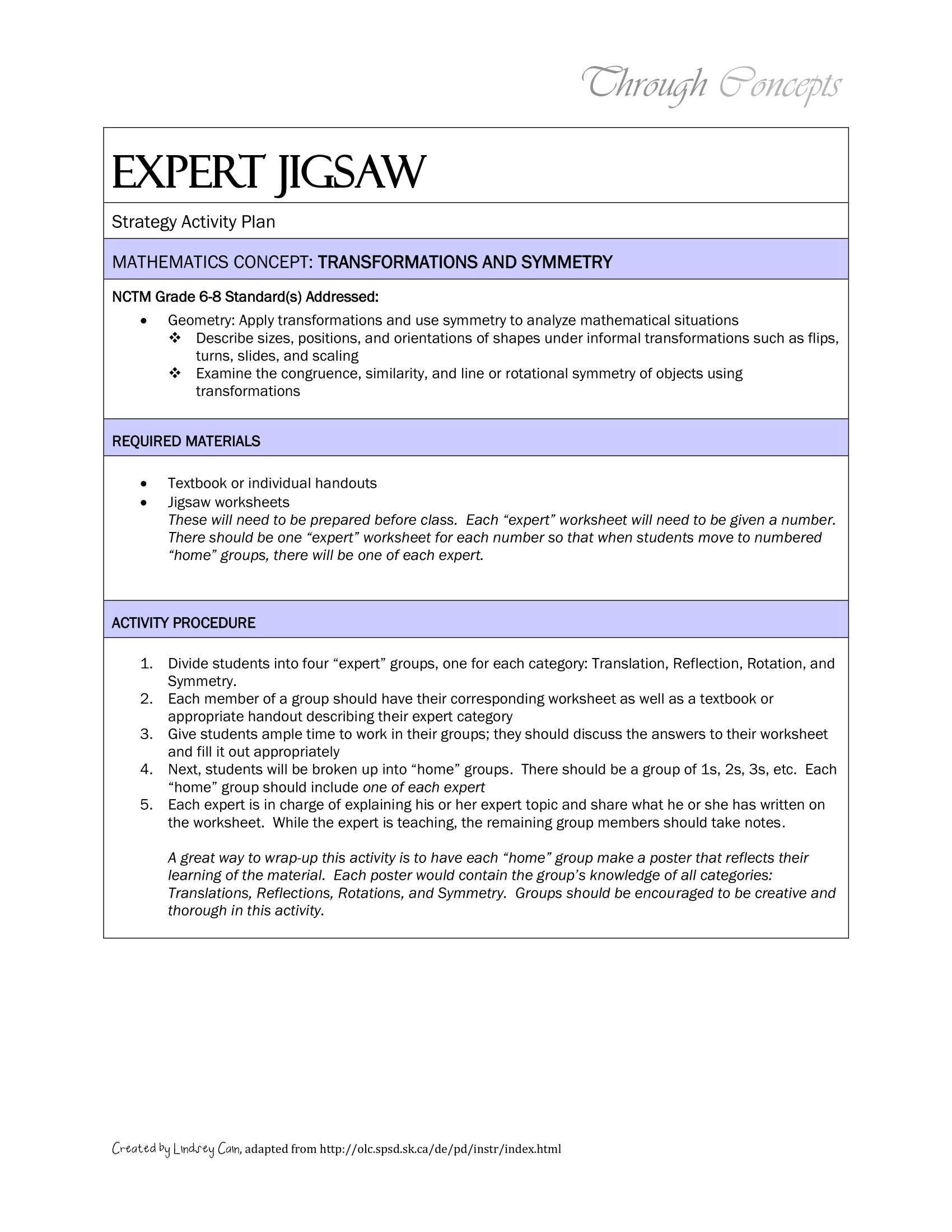
As you can see in the example above, Lindsey’s effort employs jigsaw to support a mathematics lesson. The jigsaw method organizer that students rely on differs from the one you might use in a science or history classroom. The questions, as you will see below, are more focused. Sentence stems include:
- In your own words…
- Look…translate…
- Draw your own example
Each organizer specific to an expert group is customized to a specific action that students must take. Each expert group engages in a transformation and symmetry activity.
Example Two: Algebra II
While a lot of time is spent on “organizing a jigsaw,” it’s a lot less time than you might think. Katie Elder, an instructional coach, describes how a colleague led an Algebra II class (edited for brevity):
Preparation
-On the day of the lesson, the teacher shared the learning objective and reviewed the academic vocabulary with students. -Each student received their own organizer with one problem on it, the problem that their expert group would solve. -The students worked in an independent way, without interaction with peers, on their problems.
Expert Group
-They students met together in their pre-assigned expert groups. -Working together, they discussed the problem, shared their responses, and looked for errors in their work. -After five minutes, each student felt sure that they could explain the procedure for solving the problem to their home groups.
Students returned to their home groups to share how they solved the problem. After students listen to problem-solving approaches in their home group, they jot down any insights.
Students return to their expert group to share insights other students in their home group may have shared. After all students have shared insights gleaned from the home group, students leave the expert group and return to home group one last time or engage in a shared activity (e.g. Flipgrid).
The Teacher’s Role
The teacher walked from group to group, paying special attention to the groups who had received the lowest-level problem, but answering questions and guiding all students toward correct solutions.
When students moved again, this time into home groups, each student took a turn using a small whiteboard to write out their problem, wait while the other students copied it onto their organizer, and then “worked the problem” on the board, discussing each step. To lower anxiety and increase confidence, the students considered low in their groups went first (students were grouped into X, Y, and Z expert groups, so these were X students). Then Y students taught their problem, and then Z students. Again, the teacher visited each table, listening to explanations, offering suggestions, and answering questions.
“The lesson went well. Students responded positively, and there was 100% engagement in each of the classes. Although we have not had time to check in with the teachers to look at test score data, the math teachers whose classes we worked with both commented on how glad they were to see some of their low students speak with added confidence and some of their quiet students speak at all! One teacher even commented on how a student who perpetually “checks out” was working well beyond his normal contribution.” (Source: Katie Elder guest post )
Component #3 – Jigsaw in the Math Classroom
Student inactivity in a math classroom can cause low interest in mathematics. One strategy that increases students’ activity is the jigsaw method (Source: Adopting Jigsaw Instructional Strategy for Improving Students’ Interest in Mathematics). One question the researcher in the aforementioned study asked:
“Do students differ in interest towards mathematics when taught using jigsaw, Individual Personalization and Conventional Strategies?”
Compared to other approaches, jigsaw enjoyed the highest interest of the three approaches explored. Findings suggested these conclusions:
- Mathematics teachers should embrace the use of the jigsaw method, along with traditional methods of teaching math.
- Teachers should not discriminate among students with high, average, or low socioeconomic status.
Another study focused on high school students revealed these findings:
- Teachers should design activities through the jigsaw technique to promote mathematics understanding.
- Students should practice, solve, manipulate, reason, and perform via the jigsaw technique.
- The jigsaw technique helps students make connections across mathematical skills and concepts, and other disciplines.
- After using the jigsaw technique, students should have time to discuss how they perform in solving mathematical activities.
Addendum: My Approach to the Jigsaw Method
Here are the steps I use when relying on the jigsaw method. I put them together after reviewing how others organize their jigsaw activities . You may want to review my steps, as well as how others approach them , then write your own.
Reminder: Don’t cut out those final steps that includes experts returning to and from home groups to analzye and share findings from discussions. The more discussion about insights and additions, the more learning that happens.
In Your Home Group (5-10 minutes)
- Students are divided into groups of three to six people each. This is your home group .
- Number off from one to x so that each person in the group has a number.
- Each member of the home group will be responsible for learning and teaching one “chunk” of content to your peers. Each content chunk corresponds to your assigned number.
- Take a look at your content chunk. Spend about 8 minutes reviewing it (teacher adjusts timing as needed). Jot down the big takeaways or key points in this jigsaw notes organizer .
- When time is up, go join your expert group , the people who have the same number as you, to begin the activity.
Expert Group (5-10 minutes)
- Introduce yourself (1-2 minutes).
- Share your takeaways with each other, with each learner, adding something not previously mentioned.
- Discuss your insights and why you think those takeaways are important.
- Return to your home group when time is up.
Home Group for Reporting (10 minutes)
- You now have just two minutes each to teach the others in your group what you learned in your expert group.
- Use the resources/notes you created as you share.
Expert Group for Reflection
- Take one minute each to share your Home Group’s insights
- What do those insights mean in light of what you know as Experts? Discuss.
Feature Image Source
Photo by Hans-Peter Gauster on Unsplash

Miguel Guhlin
Transforming teaching, learning and leadership through the strategic application of technology has been Miguel Guhlin’s motto. Learn more about his work online at blog.tcea.org , mguhlin.org , and mglead.org /mglead2.org. Catch him on Mastodon @[email protected] Areas of interest flow from his experiences as a district technology administrator, regional education specialist, and classroom educator in bilingual/ESL situations. Learn more about his credentials online at mguhlin.net.
Technology Standards Approved at June SBOE Meeting
Ideas for flexible centers, you may also like, free equatio alternatives: top editors for math teachers, new free ai tools from teacherserver, the essential role of a statewide open education..., the learns cycle: putting ai in instruction, part..., customizable drag-and-drop google slides templates, the frayer model: transforming vocabulary learning in all..., make connections games for the classroom, how to make flexible, data-informed student groups, make “choose your own adventure” stories with google..., five stages of k-12 ed tech adoption: part....
I love this jigsaw strategy. I frees teachers while the students do the work. Indeed the more students discuss their findings and insights, the more learning occurs!
You’re exactly right, Pauline! How are you using it in your classroom?
Leave a Comment Cancel Reply
You've made it this far.
Like what you're reading? Sign up to stay connected with us.
*By downloading, you are subscribing to our email list which includes our daily blog straight to your inbox and marketing emails. It can take up to 7 days for you to be added. You can change your preferences at any time.
You have Successfully Subscribed!
By subscribing, you will receive our daily blog, newsletter, and marketing emails.
Jigsaw Math
A fun and effective way to practice math flashcards
Answering each flashcard solves a piece of a jigsaw puzzle, giving the student a fun incentive to complete the set of flashcards.
Completing puzzles unlocks new levels of increasing difficulty, and points are scored based on the speed, accuracy, and size of the puzzle.
Teachers/parents: Track your student's progress with detailed logging of completed puzzles and performance stats.
Import your own photos to make custom jigsaw puzzles to surprise your student!
interactive classroom
- Review the math tables
- Go to the blackboard for a lesson on addition, subtraction and multiplication
- Check out the calendar to see when puzzles were completed
- Keep track of high scores on the sticker poster
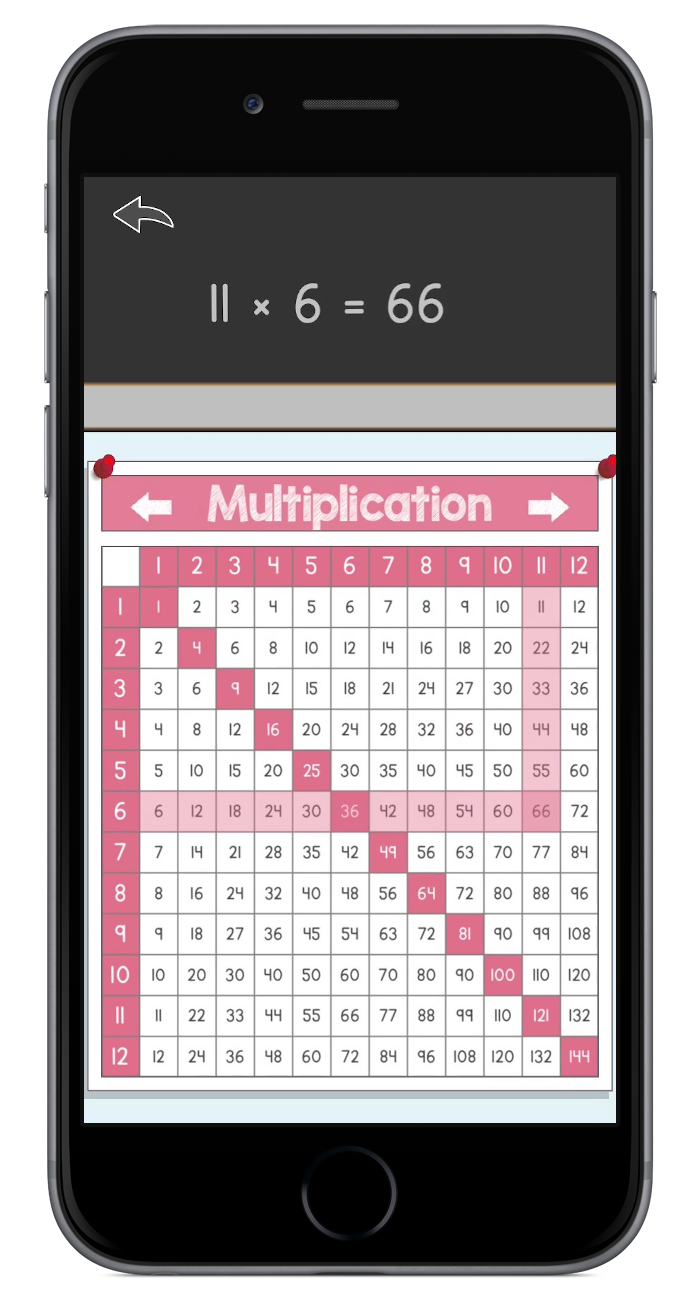
Multiplication Table
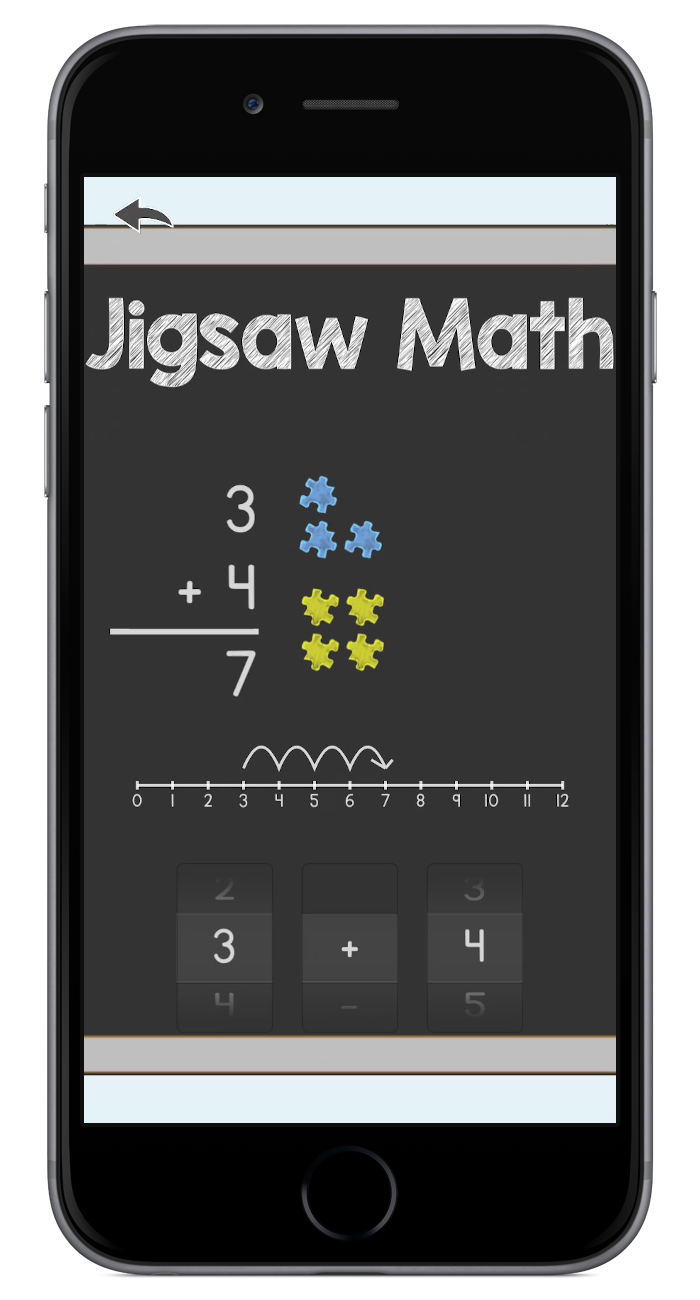
Blackboard Lesson
Keep track of your student's progress.

History Log
Track your student's progress with history logs of completed puzzles, and track their accuracy and speed over time.
Stats are available on individual math facts, so you can see which problems your students have mastered, and which ones they need more practice on. Jigsaw Math adjusts to past performance and automatically builds future puzzles with flashcards that need the most practice.

Flashcard Stats
Symmetry Jigsaws
Learn about Symmetry by solving Jigsaw Puzzles ... examples from Nature, Mathematics, Art and Engineering
| | |
| | |
| | |
| | |
| Also see: | |
| | |
| | |
Why Jigsaws? See the University of Chicago research report: " Learning about spatial relationships boosts understanding of numbers "
Adventures in Oceanography and Teaching
Dr. mirjam s. glessmer, using the “jigsaw” method for practicing solving problem-sets.
A method to get all students engaged in solving problem sets.
A very common problem during problem-set solving sessions is that instead of all students being actively involved in the exercise, in each group there is one student working on the problem set, while the rest of the group is watching, paying more or (more likely) less attention. And here is what you can do to change that:
The jigsaw method (in German often called the “expert” method), you split your class into small groups. For the sake of clarity let’s assume for now that there are 9 students in your class; this would give you three groups with three students each. Each of your groups now get their own problem to work on. After a certain amount of time, the groups are mixed: In each of the new groups, you will have one member of each of the old groups. In these new groups, every student tells the other two about the problem she has been working on in her previous group and hopefully explains it well enough that in the end, everybody knows how to solve all of the problems.
This is a great method for many reasons:
- students are actively engaged when solving the problem in their first group, because they know they will have to be the expert on it later, explaining it to others who didn’t get the chance to work on this specific problem before
- in the second set of groups, everybody has to explain something at some point
- you, the instructor, get to cover more problem sets this way than if you were to do all of them in sequence with the whole group.
How do you make sure that everybody knows which group they belong to at any given time? A very simple way is to just prepare little cards which you hand out to the students, as shown below:
Cards to help organize the practice and discussion groups
The system then works like this: Everybody first works on the problem with the number they have on their card. Group 1 working on problem 1, group 2 on problem 2, and so forth. In the second step, all the As are grouped together and explain their problems to each other, as are the Bs, the Cs, …
Jigsaw with 9 participants
And what do I do if I have more than 9 students?
This works well with 16 students, too. 25 is already a lot – 5 people in each group is probably the upper limit of what is still productive. But you can easily split larger groups into groups of nine by color-coding your cards. Then all the reds work together, and go through the system described above, as do the blues, the greens, the yellows…
Jigsaw with 18 participants in 6 sub-groups of 9 students going through the system as described above
This is a method that needs a little practice. And switching seats to get all students in the right groups takes time, as does working well together in groups. But it is definitely worth the initial friction once people have gotten used to it!
Related Posts to "Using the "jigsaw" method for practicing solving problem-sets":
- Reducing bias and discrimination in teaching: an… June 2, 2022
- Teaching field courses in a virtual setting October 7, 2020
- Published now: "Activity bingo: Nudging students to… July 29, 2023
- Supporting conceptual understanding of the Coriolis… May 3, 2019
- Experiment: Demystifying the Coriolis force August 3, 2018
Liked it? Tell others about it!
One thought on “ using the “jigsaw” method for practicing solving problem-sets ”.
Pingback: A quick introduction to Cooperative Learning (summarizing Anja Møgelvang’s workshop) - Adventures in Oceanography and Teaching
Leave a Reply Cancel reply

Or search by topic
Number and algebra.
- Place value and the number system
- Fractions, decimals, percentages, ratio and proportion
- Calculations and numerical methods
- Algebraic expressions, equations and formulae
- Coordinates, functions and graphs
- Patterns, sequences and structure
- Properties of numbers
Geometry and measure
- 3D geometry, shape and space
- Transformations and constructions
- Vectors and matrices
- Measuring and calculating with units
- Pythagoras and trigonometry
- Angles, polygons, and geometrical proof
Probability and statistics
- Handling, processing and representing data
- Probability (spec_group)
Working mathematically
- Thinking mathematically
- Mathematical mindsets
Advanced mathematics
- Decision mathematics and combinatorics
- Advanced probability and statistics
For younger learners
- Early years foundation stage
Multiplication Square Jigsaw
Why do this problem.
This jigsaw is a great way to reinforce children's awareness and understanding of the sequences contained within the multiplication square. The jigsaw format will capture children's curiosity and provides a motivating context in which to practise the times tables.
Possible approach
One way of introducing the task would be to display the jigsaw on the screen, but hide the title and explanatory text at first. Instead, ask learners to say what they see and by taking contributions, tease out the task. If you have access to a computer suite, or tablets, then you could ask children to try to put the jigsaw together in pairs using the onscreen interactive. Alternatively, you could print off and cut out this sheet of the grid and pieces . Ask them to keep a record of the order in which they place pieces so that this can be shared later. Warn them that you will want to know why they made the choices that they did! The conversations the children have amongst themselves as they work will be well-worth listening in on as they will reveal any misconceptions, but also inform you as to how well the children are able to reason mathematically. As hinted at above, in the plenary you could invite some pairs to explain how they went about solving the jigsaw, or at least to go through the first few pieces they placed. How many different ways of starting did the class find?
Key questions
Possible extension.
David Longman, a teacher at Holmemead Middle School, very kindly suggested a Ripped-up Tables activity which could be used as a follow-up to the Multiplication Square Jigsaw. Not only do pupils have to put the square together, they have to complete it first! Both Mystery Matrix and Missing Multipliers would make good follow-up tasks to this one. The format of a grid is the same, but in these two problems, children are given products and have to work out the row and column headings.
Possible support
At first, children may want to use a ready-made table square to help in doing the jigsaw before trying to do again (or trying later stages) without this aid.

EXPRESS PAYMENTS - click here to make a payment by credit card

Jigsaw Maths 7 Problem Solving BLM 2nd Edition
- Unit price / per
- Product Description
- Additional Information
The Jigsaw Maths Problem Solving Black Line Masters model problem solving strategies and provides challenging tasks. These are a flexible resource that can complement any maths program.
- SKU / ISBN: 9781741350302
- Format: Copymasters
- Series: Jigsaw Maths
- Publisher: Firefly Education
- Subject: Textbooks and Workbooks
- Audience: Primary
- Curriculum: Australian
- Year Level: Year 7
Customer Reviews
We also recommend.
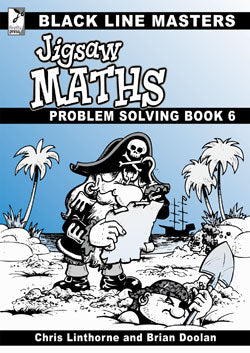
Jigsaw Maths 6 Problem Solving BLM 2nd Edition
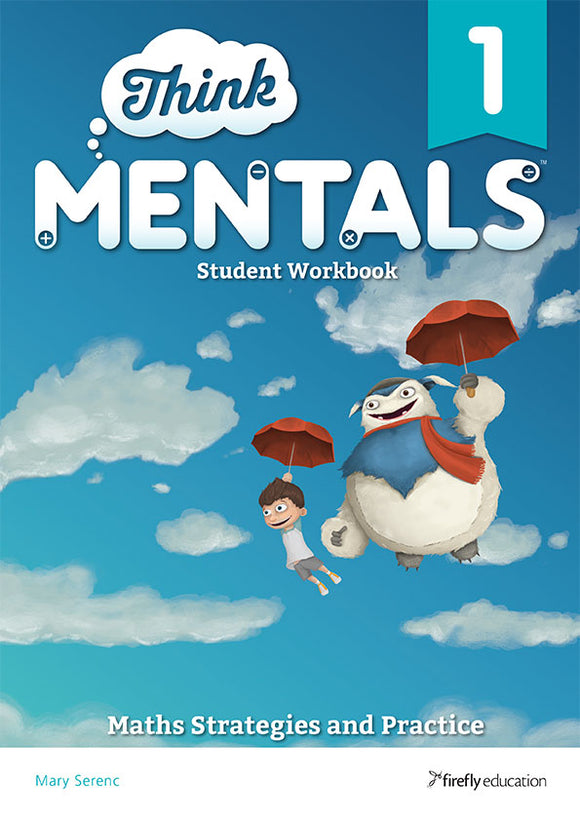
Think Mentals 1 Student Book
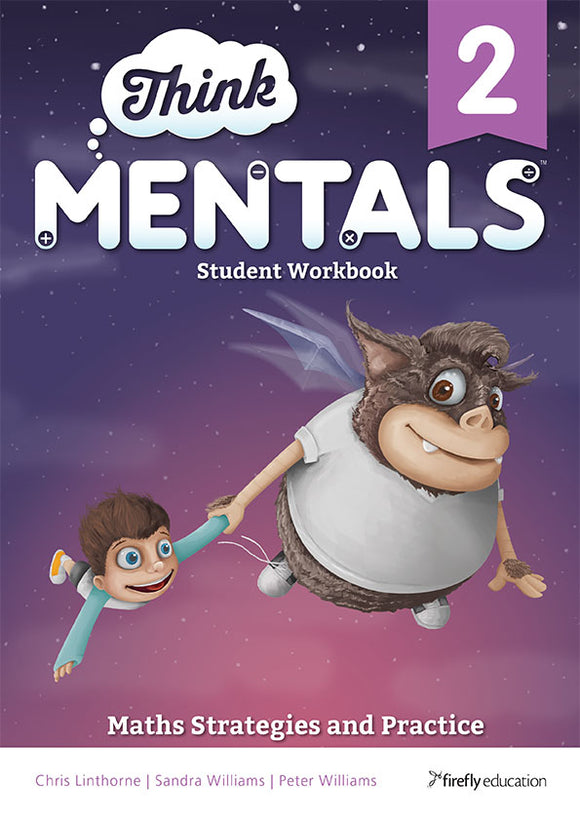
Think Mentals 2 Student Book
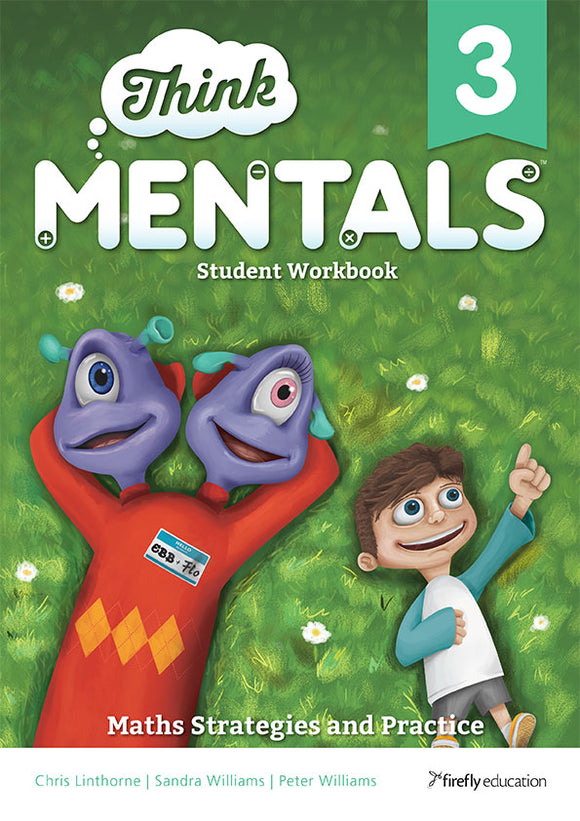
Think Mentals 3 Student Book
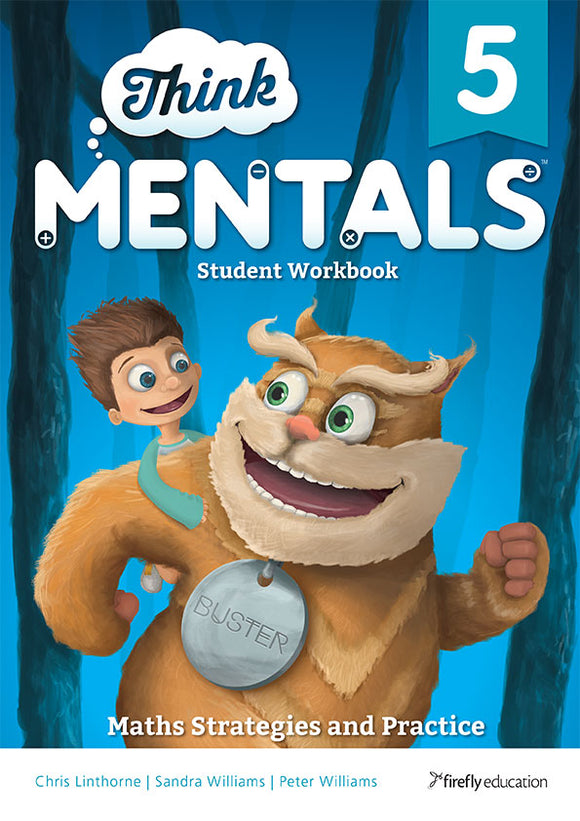
Think Mentals 5 Student Book
- choosing a selection results in a full page refresh

Jigsaw Math
About the store, featured resources.

Mystery Grid Puzzle: (Owl) Distributive Property
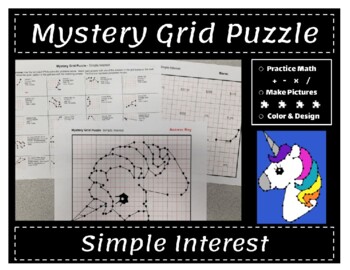
Mystery Grid Puzzle: (Unicorn) Simple Interest
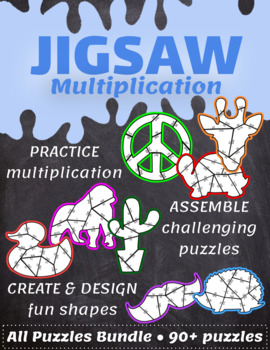
Complete Bundle - Jigsaw Multiplication Puzzles (96 Puzzles)
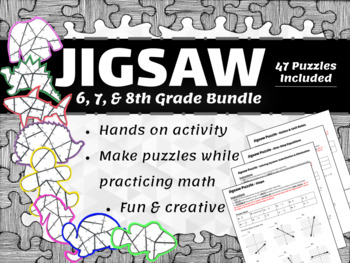
Jigsaw Puzzle - 6, 7, and 8th Grade Bundle
Store categories, all resources.
- Best Sellers
- Price (Ascending)
- Price (Descending)
- Most Recent
Resource type
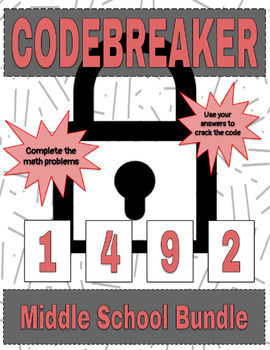
Codebreaker - Middle School Bundle
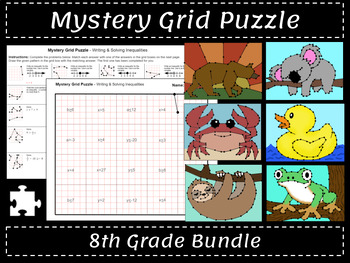
Mystery Grid Puzzles: 8th Grade Bundle

Mystery Grid Puzzle: Interior & Exterior Angles of Triangles
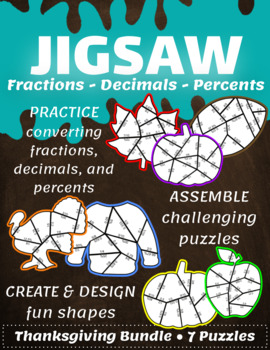
Jigsaw Fractions, Percents, Decimals Puzzles - Thanksgiving Bundle (7 puzzles)
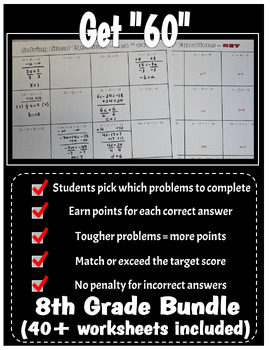
Get "60" - 8th Grade Bundle
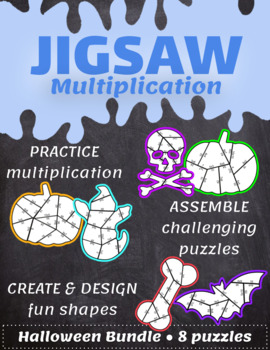
Halloween Bundle - Jigsaw Multiplication Puzzles (8 Puzzles)
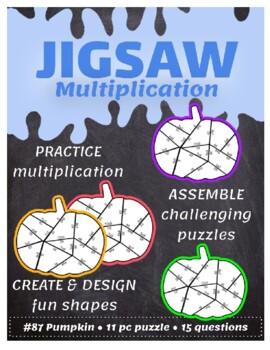
Jigsaw Multiplication Puzzle #87 - Pumpkin (15 Qs)
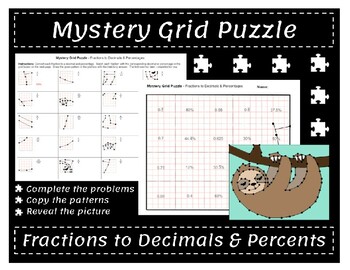
Mystery Grid Puzzle: (Sloth) Converting Fractions to Decimals & Percentages
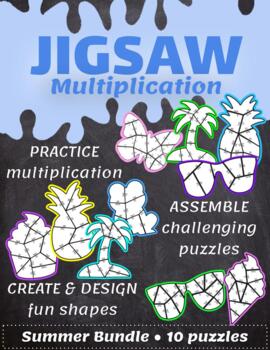
Summer Bundle - Jigsaw Multiplication Puzzles (10 Puzzles)
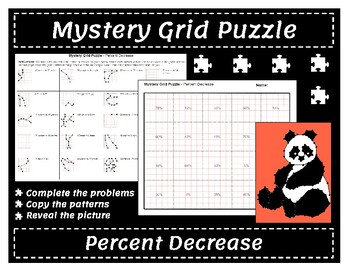
Mystery Grid Puzzle: (Panda) Percent Decrease (Custom for Jamie)
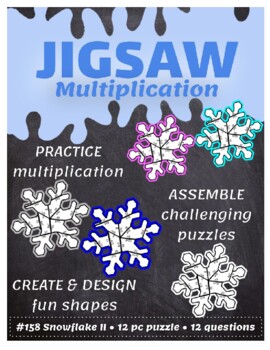
Jigsaw Multiplication Puzzle #158 - Snowflake II (12 Qs)
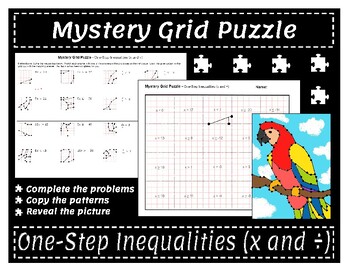

Mystery Grid Puzzle: (Parrot) One-Step Inequalities (x and /) (Custom for Jamie)
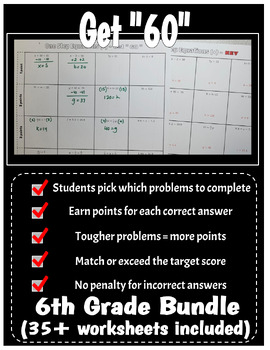
Get "60" - 6th Grade Bundle
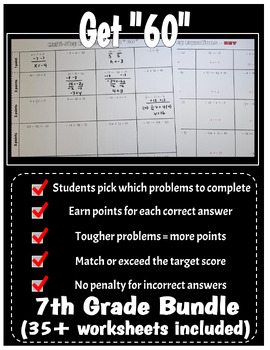
Get "60" - 7th Grade Bundle

Codebreaker - Product, Power, & Quotient Properties of Exponents
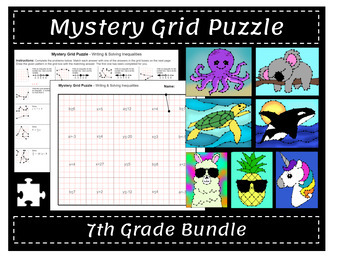
Mystery Grid Puzzles (7th Grade Bundle)
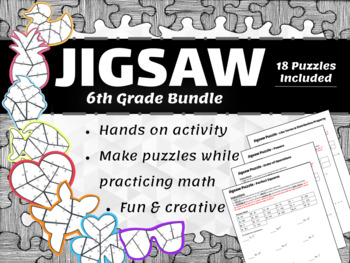
Jigsaw Puzzles - 6th Grade Bundle

Teaching Style
My own education history.
- We're hiring
- Help & FAQ
- Privacy policy
- Student privacy
- Terms of service
- Tell us what you think

- Testimonials
Please enter key search to display results.

Get a head-start with HCL Jigsaw
About program, calling school students of grades 6 – 9 to be a part of hcl jigsaw, india’s biggest problem-solving assessment platform .

HCL Jigsaw is a pioneering program of HCL Group, a $13.1 billion global conglomerate. The program is aimed at raising awareness the importance of 21st-century skills and building a community of young problem-solvers through a pan-India problem-solving assessment program.
The platform is in line with the New Education Policy and is devised to identify and award India’s Top Young Problem Solvers from grades 6 – 9 through a multi-layered evaluation process.
The competition will have three rounds:
- Registration Duration | April 1, 2024 – July 31, 2024
- Round 1 (Olympiad) | Exam Slot 1: June 15 – 17; Exam Slot 2: August 2 – 4
- Round 1 Result | August 11, 2024; 03:00 PM
- Round 2 (Collaboration – Project Based Learning)| August 24 – 25, 2024
- Round 3 (Jury Presentations) | Sept. 7 & 8, 2024
- Award Ceremony | Sept. 9, 2024, 04:00 PM
Note that the student needs to be in Grades 6-9 in the academic year 2024-25 to be eligible for the program.
For bulk registrations or to enroll your school, mail us at [email protected]
HCL Jigsaw aims to:
- Raise awareness on the importance of 21st-century skills;
- Celebrate educators who strive hard to nurture these skills in young individuals
- Recognize and reward students who have the potential to be tomorrow’s leading problem-solvers; and
- Help all participating students understand improvement areas so that they can work towards developing these critical skills
Why focus on Problem Solving?
- It is listed as the top 10 skills needed for future readiness by the World Economic Forum.
- Encourages students to trust their abilities and empowers them to think methodically .
- Enables students to take unique approaches to solve problems in a constructive and holistic manner .
- Energizes young minds and enables them to apply their learnings in real life context .
Benefits of Participation
What makes hcl jigsaw program a future-ready approach for your child.
Brought to you by the best minds in the technology industry, HCL Jigsaw is aimed enabling exciting new-age learning methods for your children. HCL Jigsaw program brings various benefits for your child’s learning journey:
Recognition on completion of Qualifiers
- Detailed skill assessment report, national ranking and e-certificate of participation for all participants
- e-certificate of distinction or merit based on national percentile
Rewards for Finale
- Total prize purse worth 12 Lakhs for 12 winners and 24 finalists
- Learning opportunity at the prestigious HCL Innovation Labs for winners
- Award as India’s Best Young Problem Solver

Feedback from the Educators
- Problems are a ...
“Problems are a sign of life with skills as tools to turn them upside down. Success is an outcome of efficacious use of these tools to solve the jigsaw puzzles of life."

Late Nutan Singh
Former Principal of VidyaGyan
- Problem-solving skills ...
"Problem-solving skills will play an important part in preparing learners and leaders for their future rather than the past. Many schools say it seems harder than ever to provide what young people need because what they need is less certain. However, when we talk about the need for the 4Cs, problem solving is an essential common ingredient that we cannot ignore."

Mr. Matthew Ivulich
Shiv Nadar School
- Oakridge believes that ...
"Oakridge believes that we need to nurture individuals to be future-ready, responsible citizens, who impact the world positively by imbibing the 4C's - Critical thinking, Collaboration, Communication and Creativity."

Ms. Hema Chennupaty
Oakridge International School
- According to me , ...
“According to me, problem solving skills are empowering every individual and bringing out their potentials in order. It also makes them feel confident and independent to tackle problems and solving challenges on their own. I feel HCL Jigsaw is giving scope to the students to think critically in order to analyze the problems as well to find a probable solution for that. It is helping them to enhance their learning. ”

Debjani Chakraborty
Brilliant Star School
- Change is the ...
"Change is the recurring phenomenon of today's times and change always results in uncertainty. In this scenario, everyone has to build their problem solving skills to face the challenges of the modern world to resolve the issues that change and uncertainty present. The focus on imparting problem solving skills in children is therefore of paramount importance for them to be ready to face the challenges that await them as they step into the real world."

Jyoti Kumar
Director of Education Arya Vidya Mandir Group of Institutions
- According to me ...
According to me, problem solving skills are empowering every individual and bringing out their potentials in order. It also makes them feel confident and independent to tackle problems and solving challenges on their own. I feel HCL Jigsaw is giving scope to the students to think critically in order to analyze the problems as well to find a probable solution for that. It is helping them to enhance their learning.

Brilliant Star School, Agartala
- Investment in educa ...
Investment in education and training students for 21st-century skills is a fundamental need for the growth and development of the country and self. The role of the teacher has changed to facilitator and their role is shifted from instructing students to helping students become constructive learners where change is constant and learning never stops. HCL JIGSAW has given schools with different curriculums across India , a trusted platform to test their students on the national level. I am sure it will help young bright minds recognize their true potential at the right age!

Dr. Kavita Aggarwal
Director - D. G. Khetan International School Chairperson - MISA, Mumbai

HCL Jigsaw is a competitive platform aimed at helping you assess critical reasoning skills and putting them on an exciting lifelong learning journey. Designed by the industry’s best minds, the program includes opportunities to win exciting prizes and creating innovative solutions.
Other Links
- Terms & Conditions
© 2024 HCL JIGSAW. HCL Corporation Private Limited
Interested and want to know more?
Give a missed call at +91 9555046046 or share your contact details below..
Education ∪ Math ∪ Technology
- Instructional Routines
- Presentations
- Privacy Policy
August 5, 2013 / 0 Comments
Jig-saw problem solving
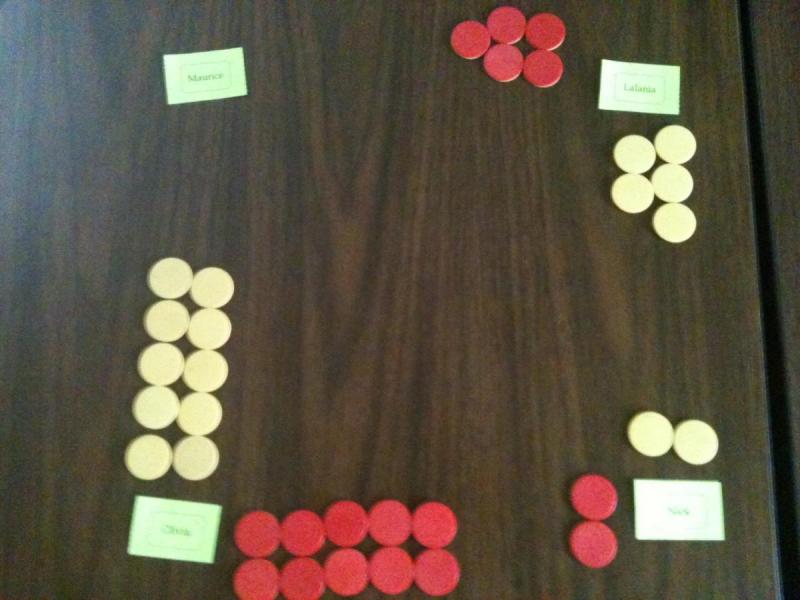
Today in a workshop with Sally Keyes of the Silicon Valley Math Initiative , we started off the day with what I would call a jig-saw problem. Each of us was given a clue, and the instructions that for this activity we could not use pencil or paper, or share our clue card directly with our group members, but that we could talk about our clue. We sat in a group, and had some counters, beans, and paperclips we could use if we wanted.
The problem we were given was called Four Kids with Figs . Each of us had one card with one clue on it, and together we tried and figured out how many figs each kid had. During the problem solving, Sally walked around the room and listened to us work, but she very rarely interjected any of her ideas, she mostly just listened and used what we said to debrief the problem afterward.
Not having pencil and paper (or access to any other recording devices) meant that we couldn’t easily record what each other said, and this led to increased discussion between us, and the need to use the manipulatives we were given to create a shared representation of the problem. We also had a discussion around what makes collaborative groups work better, which probably helped our group work be more focused. Having ownership over a clue meant that each of us had to interact with the others at least enough to ensure that our clue was interpreted by the other members of our group.
We had a very interesting problem solving session, and I attempted to capture a snapshot of our work above. It was fascinating to me to see how we ended up representing our solution for the problem using the manipulatives we had, and how the constraints of the task influenced our work. I could see this structure being a really useful way to facilitate mathematics discussions and problem solving in a classroom setting.
- Author info
Leave a Reply Cancel reply
Your email address will not be published. Required fields are marked *
Notify me of followup comments via e-mail. You can also subscribe without commenting.
This site uses Akismet to reduce spam. Learn how your comment data is processed .
Teach the controversy
Previous post
Stop Googling everything
Administrator
Popular posts
- Why Is a Negative Times a Negative Positive? 121.1k views
- What is Conceptual Understanding? 54.8k views
- Teachers are made, not born 48.2k views
- Online Learning Recommendations 41.7k views
- The difference between instrumental and relational understanding 29.6k views
- Philosophy of Educational Technology 21.4k views
- Paper use in schools 21.2k views
- Some problems with ebooks in schools 18.2k views
- 20 things every teacher should do 16k views
- Why teach math? 15.8k views
Archived posts
| M | T | W | T | F | S | S |
|---|---|---|---|---|---|---|
| 1 | ||||||
| 2 | 3 | 4 | 5 | 6 | 7 | 8 |
| 9 | 10 | 11 | 12 | 13 | 14 | 15 |
| 16 | 17 | 18 | 19 | 20 | 21 | 22 |
| 23 | 24 | 25 | 26 | 27 | 28 | 29 |
| 30 | ||||||
Recent Posts
The Transformative Power of Games in Learning
April 18, 2024
Tracking Whole Group Conversations
March 20, 2024
Instructional Routines for Math
March 15, 2024
Welcome to my AI-Generated Math Ted Talk
March 11, 2024
AI in Education
March 9, 2024
Email address:
I have read the privacy policy.
K-12 Resources By Teachers, For Teachers Provided by the K-12 Teachers Alliance
- Teaching Strategies
- Classroom Activities
- Classroom Management
- Technology in the Classroom
- Professional Development
- Lesson Plans
- Writing Prompts
- Graduate Programs
The Jigsaw Method Teaching Strategy
Misty hance.
- October 18, 2016

The jigsaw method of teaching is a strategy first developed by Elliot Aronson in 1971 and further advanced in assessment practices by Robert Slavin in 1986. Aronson developed this method as means to assist students overcoming learning gaps in recently desegregated schools in Austin, Texas (Teaching Methods). For the past 50 years, teachers have been utilizing this method and its various components to promote collaboration in early grades through post-secondary classroom settings.
What is Jigsaw Method of Teaching?
Just as a jigsaw puzzle is a collection of various pieces that come together to make a complete picture, the jigsaw method of teaching is a collection of topics, which will be fully developed by students before coming together to make a complete idea. To be more specific, this type of cooperative learning strategy allows individuals or small groups to become responsible for a subcategory of a larger topic. After researching and developing their idea, each individual or small group then has the responsibility to teach it to the rest of the group or class.
Benefits of the Jigsaw Method in Education
There are many benefits to using the jigsaw method in one’s classroom. For starters, in most instances, students who take ownership in their learning will better understand the material. As active learners, students are directly immersed in the information and material, which promotes a deeper understanding of that material.
When students are given the opportunity to contribute to a group , they also learn life skills such as communication and working within a timeline. This method also promotes collaboration and discussion, as well as self-motivated learning strategies. Students who work together learn to ask questions to clarify their understanding and provide critical feedback in appropriate manners. In addition, the jigsaw method in education effectively produces academic gains in problem solving and analyzing, two important cognitive skills.
What Material can be Used in the Jigsaw Method?
While most think of the jigsaw method being used to teach subcategories of a specific overarching lesson, it can be even simpler than that. Each group could be responsible for a section of the textbook chapter, a specific strategy for a math concept, the culture of a county within a region, a chapter of a trade book, or even analyzing poetry or other works of art.
Jigsaw Method Examples to Try in Your Classroom
Individual pieces.
For virtual classrooms or younger students, it may be easiest to start using this method as individuals who then come together to present their piece of the puzzle. A teacher would start by assigning each student a subcategory to research. The teacher may ask each child to create a slide presentation to then share with the class that fully develops their subcategory. This can also be done within the traditional classroom if the overall lesson has enough subcategories, or if the teacher chooses to let two to four students work independently on the same subcategory and share separately to provide a more in-depth look at each subcategory.
Cooperative Groups
As with any group activity, the teacher will divide students into groups of four or five students. The number of groups should be based on the number of subcategories that fit into the overarching lesson; then divide the number of students into groups accordingly. Each group would then be given a subcategory to cooperatively research and develop . As with the individual’s approach, each group would then create a presentation and share it with the entire class.
Jigsaw within Groups
Similar to the cooperative group approach, this example allows each member of the small group to develop a subcategory and share within their small group. In order to start this method, the teacher would divide the lesson into subcategories. Then each small group would be created with one student receiving one subcategory of the lesson. For this method, each small group gets the same set of subcategories.
Once individuals have researched their own subcategory, they will meet with individuals from the other small groups with the same topic to better develop their understanding and become experts of the subcategory. Each student would then return to their original group and teach their subcategory to the rest of their small group. Students within the group take notes or fill-in a study guide to fully understand all subcategories. This also works well for students who are learning to work with a group but may not yet be comfortable speaking in front of a whole class.
Assessment Guidelines
No matter the type of jigsaw method used, all students will need to be assessed on all subcategories at the end of the lesson so that the teacher knows what material might need to be retaught by the teacher. This assessment is also meant to ensure that all students gained an understanding of the entire content, not just their expert piece of the puzzle. In most instances, the teacher will most likely choose to give each individual their own individual score based on their assessment. However, for the jigsaw within groups method, the teacher may take each student’s individual score and average it with the other members of the small group. Each member of the small group would then receive that average in addition to their own individual score. This helps ensure that all students work cooperatively to teach the material and hold each other accountable. This method of scoring is more suitable for higher grades and for students with a full understanding of their role in the jigsaw method.
It is a proven understanding that anytime someone is given the opportunity to teach information, they personally gain a deeper understanding of the material. The jigsaw method, whether used at an individual or cooperative group level, allows for this peer-teaching opportunity. Students become invested in what they are responsible for teaching and for what they learn, which deepens their knowledge and application of the skill. The jigsaw method is a valuable educational strategy to use at any grade level.
Teaching Methods: A Collection of Pedagogic Techniques and Example Activities. Retrieved 1-7-2021: https://serc.carleton.edu/NAGTWorkshops/teaching_methods/jigsaws/why.html#:~:text=The%20group%20task%20that%20follows,an%20efficient%20cooperative%20learning%20strategy .
*updated january, 2021.
- #JigsawMethod , #TeachingStrategies
More in Teaching Strategies

Rhythm and Reasoning: Music in the Classroom
Imagine students walking into your classroom while music plays in the background, instantly…

How to Build Resilience in Students
As a child, having the ability to bounce back after something goes wrong…

Teacher Hacks You Need to Try This School Year
As you gear up for another exciting year of learning and fun it’s…

Empowering Students to Become Problem-Solving Champions
Have you ever stood in front of the classroom and thought about all…
SEND inclusion jigsaw: a teaching strategy for all learners

Editor’s Note:
This is an updated version of a blog post originally published on June 19, 2019.
Up to 1 in 4 learners in your class will struggle with maths. Help support them (and everyone else) with the SEND inclusion jigsaw teaching strategy.
Think about the pupils in your class who struggle with maths. What are the barriers to their learning?
Some pupils have gaps in their knowledge and others might misunderstand core concepts such as place value. Others struggle because they have a special educational need or disability (SEND), for example: a moderate learning difficulty, a speech and language need, or a specific learning difficulty .
Inclusive high-quality teaching is the first step in responding to pupils who have SEND (and those who don’t).
The SEND inclusion jigsaw makes sure planning and implementation meets the needs of all learners, and builds in high expectations for everyone.
What is the SEND inclusion jigsaw teaching strategy?
The SEND inclusion jigsaw teaching strategy looks at lessons like a jigsaw containing multiple pieces. If pieces are missing, the lesson is likely to be incomplete.
When we tackle a jigsaw, we often start by identifying the corner pieces. The corners are the foundations that need to come first — they are the elements we build the lesson on. The piece in the middle of the jigsaw (developing independence), completes the picture and is the final piece of the puzzle.
After all, our aim as teachers is to develop children who are independent thinkers and learners.
What does the jigsaw look like in practice?
The jigsaw diagram below outlines nine key elements of the SEND inclusion jigsaw teaching strategy. It fosters inclusive high-quality teaching for pupils with SEND.
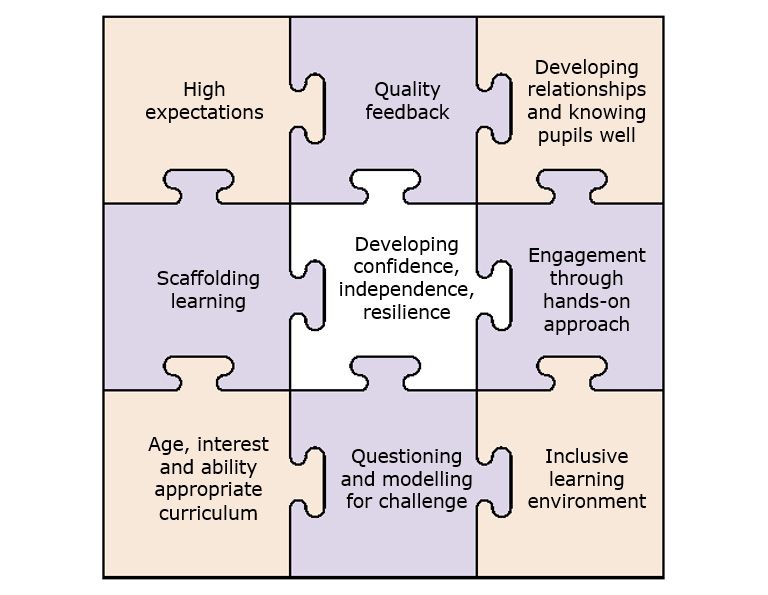
Here are some examples of how you can put each of the elements of the SEND inclusion jigsaw teaching strategy in place to support all the pupils in your class, including those with SEND.
1. High expectations
Learners who struggle with maths often have a belief they ‘can’t do it’ and can develop maths anxiety as a result of this thinking. A good way to tackle this is to set high expectations and demonstrate them in a positive way.
Don’t just tell your learner you have high expectations for them, show them. Set a goal and support the learner to work towards it.
For example, expect a child with language difficulties to use precise mathematical vocabulary and support them by providing visual prompts such as mathematical word mats.
2. Developing relationships and knowing pupils well
Never underestimate the importance of developing positive relationships with your pupils. Make sure you’re well-informed about your pupils and that you know them as individuals. Find out what their needs and strengths are and what interests or motivates them.
For example, at the start of the year, ask your pupils to complete the following statement:
“One thing I would like my teacher to know about how I learn best in maths is…”
The responses can be enlightening!
3. Inclusive learning environment
If you have a maths working wall in your classroom, check that it’s accessible to all pupils. Too much information on a working wall can be overwhelming for pupils with concentration difficulties.
For example, provide a distraction-free space (such as a workstation) for pupils if they need it.
4. Age, interest, and ability appropriate curriculum
Regular revision and repetition of concepts will be useful for pupils who have cognitive challenges. Check that your maths curriculum takes a cumulative, ‘spiral’ approach to learning , where key concepts are revisited and built upon.
For example, a maths mastery approach to the curriculum, can be particularly useful for pupils with learning difficulties due to the way it uses the concrete, pictorial, abstract approach ( CPA ) to support inclusive high-quality teaching and a deep understanding of mathematical concepts.
5. Quality feedback
To achieve mastery in maths, it’s essential that pupils having difficulty grasping any concept are identified quickly and provided with extra support. When you identify particular misconceptions, be specific, accurate, and clear with your feedback.
For example, say to the pupil,
“You have completed step 1 of the problem but you now need to check steps 2 and 3.”
Provide guidance on their next steps rather than simply highlighting errors.
6. Engagement through hands-on approach
The CPA approach provides the ideal opportunity for pupils to learn maths concepts using hands-on, physical resources at the concrete stage. Some pupils will need to spend longer at the concrete or pictorial stage, or will need to continue having these stages reinforced alongside the abstract stage.
Make sure you don’t remove concrete materials too early when pupils need to carry on using them to secure their conceptual understanding (it is okay for KS2 pupils to be using Unifix!) and know the misconceptions associated with the approach .
7. Questioning and modelling for challenge
Part of the modelling process involves using the appropriate mathematical vocabulary . Make sure you explicitly teach the vocabulary that pupils will need to access the lesson and check their understanding of it.
Pre-tutoring before the lesson can provide a good opportunity to introduce and explain mathematical vocabulary and often gives less confident pupils a knowledge boost!
8. Scaffolding learning
Scaffolding involves using a range of strategies to provide temporary support for pupils, moving them towards increasing independence.
For example, when pupils are tackling maths word problems, you can scaffold their learning by providing visual clues to help them understand the instructions, or by pre-highlighting the most important words within the problem.
9. Developing independence
To encourage more reluctant pupils to independently overcome challenges when they get stuck with their learning, try introducing the 3 B4 Me strategy. Before the pupil goes to an adult for help they must try the following:
- Brain (think for themselves)
- Buddy (ask a peer)
- Book or board (e.g. textbook or working maths wall)
What are the benefits of the SEND inclusion jigsaw teaching strategy?
The SEND inclusion jigsaw teaching strategy doesn’t just benefit pupils with SEND, but allows you to meet the needs of all pupils. Ask yourself, are the pieces in this jigsaw different from what makes inclusive high-quality teaching for any pupil?
The answer should be a resounding no!
Simply put, good teaching meets the needs of all learners and enables all learners to make progress. That’s what makes a really inclusive maths lesson .
Natalie Packer
Browse by Topic
Your teaching practice.
Boost your teaching confidence with the latest musings on pedagogy, classroom management, and teacher mental health.
Maths Mastery Stories
You’re part of a growing community. Get smart implementation advice and hear inspiring maths mastery stories from teachers just like you.
Teaching Tips
Learn practical maths teaching tips and strategies you can use in your classroom right away — from teachers who’ve been there.
Classroom Assessment
Identify where your learners are at and where to take them next with expert assessment advice from seasoned educators.
Your Learners
Help every learner succeed with strategies for managing behaviour, supporting mental health, and differentiating instruction for all attainment levels.
Teaching Maths for Mastery
Interested in Singapore maths, the CPA approach, bar modelling, or number bonds? Learn essential maths mastery theory and techniques here.
Deepen your mastery knowledge with our biweekly newsletter
By clicking “Accept All” , you agree to the storing of cookies on your device to enhance site navigation, analyze site usage and assist in our marketing efforts.

IMAGES
VIDEO
COMMENTS
Part of the series Jigsaw Maths.. View all products in this series. Jigsaw Maths Problem Solving Black Line Masters are a flexible resource that models problem-solving strategies and incorporates challenging tasks. Problem solving tasks encourage cooperative learning and provide students with the opportunity to apply mathematics in new or unfamiliar contexts.
Math and Logic Puzzles. If you REALLY like exercising your brain, figuring things 'round and 'round till you explode, then this is the page for you ! ... Symmetry Jigsaw Puzzles. Logic Puzzles. Sam Loyd Puzzles. Shape Puzzles. Einstein Puzzles. Number Puzzles. Tricky Puzzles. Algebra Puzzles. Card Puzzles. Assorted Math Puzzles and Quizzes ...
7.) Maths Puzzle 07 of 10: Matchsticks Maths. Problem: Make the maths equation true by moving ONE AND ONLY ONE matchstick? (*Bonus if you can find all three possible answers) See Also: video tutorial on solving the matchstick maths problem.
After students listen to problem-solving approaches in their home group, they jot down any insights. ... Component #3 - Jigsaw in the Math Classroom. Student inactivity in a math classroom can cause low interest in mathematics. One strategy that increases students' activity is the jigsaw method (Source: Adopting Jigsaw Instructional ...
A fun and effective way to practice math flashcards. Answering each flashcard solves a piece of a jigsaw puzzle, giving the student a fun incentive to complete the set of flashcards. Completing puzzles unlocks new levels of increasing difficulty, and points are scored based on the speed, accuracy, and size of the puzzle.
Math explained in easy language, plus puzzles, games, quizzes, worksheets and a forum. ... Symmetry Jigsaws. Learn about Symmetry by solving Jigsaw Puzzles ... examples from Nature, Mathematics, Art and Engineering. Wooden Cogwheel Jigsaw: London Eye Jigsaw : Morpho Butterfly Jigsaw: Iris Versicolor Jigsaw : Mandelbrot Set Jigsaw: Eiffel Tower ...
Simply write the numbers of the strategies you used in the space next to the task. Your teacher will tick ( ) the problem when it has been completed and checked. Guessing and checking. 6 Checking for useful information. 2 Making a table, chart or graph. 7 Finding smaller parts of a big problem. 3 Drawing a picture or making a model.
A method to get all students engaged in solving problem sets. A very common problem during problem-set solving sessions is that instead of all students being actively involved in the exercise, in each group there is one student working on the problem set, while the rest of the group is watching, paying more or (more […]
Problem Solving Strategies JIGSAW MATHS 3 23 1 Guessing and checking 6 Checking for useful information 2 Making a table, chart or graph 7 Finding smaller parts of a big problem 3 Drawing a picture or making a model 8 Making an organised list 4 Acting out the problem 9 Solving a simpler problem 5 Finding a pattern 10 Working backwards
Why do this problem? This jigsaw is a great way to reinforce children's understanding of the sequences contained within a hundred square.It could be used as an exploratory tool for children who haven't met the 0-99 hundred square before (puzzles 2 and 4 in the interactivity), or it could play a part in assessing their understanding of it, if they have already met it.
Daily Jigsaw Puzzles. Daily Jigsaw - 01/09 - 00h. Daily Jigsaw - 31/08 - 20h. ... Quick Math. Test your math skills by arranging random numbers and operators to complete the equation. ... They enrich logic, critical thinking, and problem solving skills; They are free and easy to use and understand;
A Maths Focus Group from Reigate Priory School wrote up the strategy they used to complete the jigsaw: First we found the corners, which were pretty easy as they had to have $2$ black triangles. Then we did the edges which have $1$ black triangle but we found that we had $4$ spare, $1$ from each edge.
Multiplication and Division Facts. Complete this jigsaw of the 1 to 10 multiplication square. You could print off this sheet of the square and the pieces to cut out. The NRICH Project aims to enrich the mathematical experiences of all learners. To support this aim, members of the NRICH team work in a wide range of capacities, including ...
The Jigsaw Maths Problem Solving Black Line Masters model problem solving strategies and provides challenging tasks. These are a flexible resource that can complement any maths program. Format: Copymasters ; Series: Jigsaw Maths ; Publisher: Firefly Education ; Subject: Textbooks and Workbooks ;
Created by. Jigsaw Math. Mystery Grid Puzzle: Interior Angles of Triangles19 Questions - Problems include Writing and solving equations to find the value of variablesTriangle Sum TheoremExterior Angle TheoremHow to: Mystery Grid Puzzle1.) Solve the problems in the space provided. 2.) Find the corresponding answer box on the grid. 3.)
Katie Elder has been an instructional coach for Rowland Unified School District for six years. She also teaches one period of 11th grade English and reads everything she can get her hands on. Jigsaws in Algebra II. When my partner, Lily Thio, and I were assigned as instructional coaches to one of our district's comprehensive high schools, we ...
HCL Jigsaw is a pioneering program of HCL Group, a $13.1 billion global conglomerate. The program is aimed at raising awareness the importance of 21st-century skills and building a community of young problem-solvers through a pan-India problem-solving assessment program. The platform is in line with the New Education Policy and is devised to ...
The problem we were given was called Four Kids with Figs. Each of us had one card with one clue on it, and together we tried and figured out how many figs each kid had. During the problem solving, Sally walked around the room and listened to us work, but she very rarely interjected any of her ideas, she mostly just listened and used what we ...
Part of the series Jigsaw Maths.. View all products in this series. Jigsaw Maths Problem Solving Black Line Masters are a flexible resource that models problem-solving strategies and incorporates challenging tasks. Problem solving tasks encourage cooperative learning and provide students with the opportunity to apply mathematics in new or unfamiliar contexts.
JIGSAW MATHS 4 PROBLEM SOLVING TASK CHECKLIST 1 Guessing and checking 6 Checking for relevant and irrelevant information 2 Constructing a table, chart or graph 7 Identifying smaller tasks within a larger problem 3 Drawing a picture or diagram, or making a model 8 Making an organised list to account for all possibilities ...
The jigsaw method of teaching is a strategy first developed by Elliot Aronson in 1971 and further advanced in assessment practices by Robert Slavin in 1986. Aronson developed this method as means to assist students overcoming learning gaps in recently desegregated schools in Austin, Texas (Teaching Methods). For the past 50 years, teachers have ...
The jigsaw diagram below outlines nine key elements of the SEND inclusion jigsaw teaching strategy. It fosters inclusive high-quality teaching for pupils with SEND. ... For example, when pupils are tackling maths word problems, you can scaffold their learning by providing visual clues to help them understand the instructions, or by pre ...
I use the word piece or index to indicate which piece in the input puzzle. We will use ⊕ to indicate modulo (clock) arithmetic addition. For example 3 hours after 11 is 2. 11⊕3 = 2. Except in ...